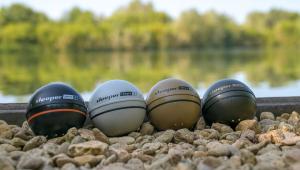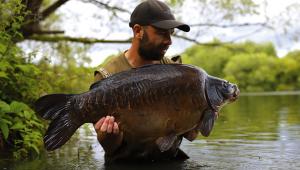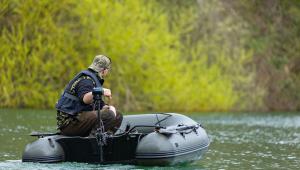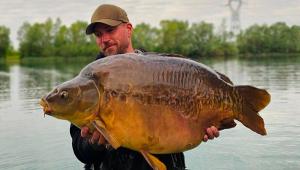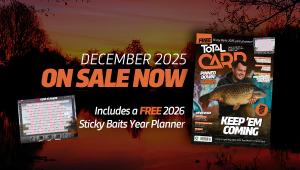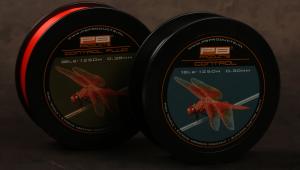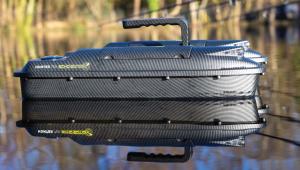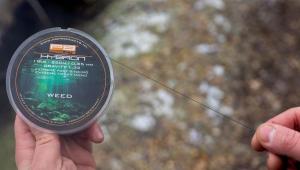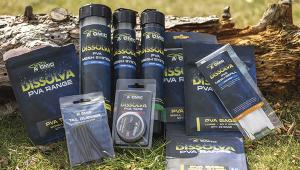Spring Leanings
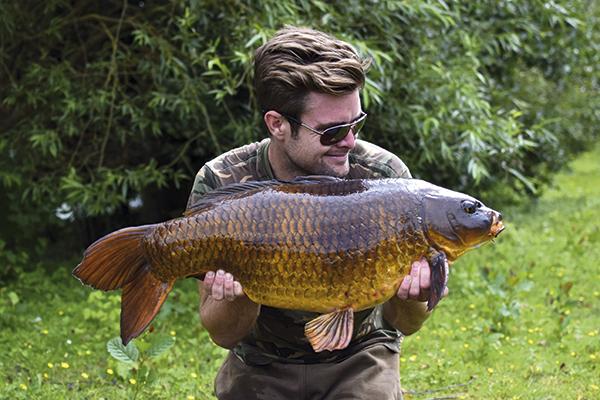
Spring is probably my favourite season to be out carp fishing for a multitude of reasons – the fish are at their biggest weights, they’re still carrying their darker winter colours and they like to put on quite a show while they’re cleaning all the parasites off. I implement a few things throughout the spring that I’m sure help me put extra fish on the bank.
Location, Location, Location
As at any time of year, getting your location right is absolutely key, but in the spring the fish can be more active than normal. What I mean by this is exploring areas of the lake that they’ve ignored through the colder months, whether that be shallower bays, snaggy areas or even sometimes the deeper water.
A lot of people have a mind-set with winter fishing that the fish are just going to head to deeper water and sit there throughout the cold months but that certainly isn’t the case, they often seek out areas where they feel more comfortable, which could be an area that sees the sun most predominantly during the day or even around higher beds of sunken weed.
First and last light is one of the best times to see them show, so keeping your eyes peeled during them times is a must.
But when those daylight hours start to lengthen, and the sun begins warming up the layers, those carp know; it may only be a temperature rise of a couple of degrees but that’s enough to kick-start them again and get them back on the move.
When arriving at the lake I will always walk it first, looking for any signs of fish. Now this could be shows, seeing them up in the water, finding them in the snags or spotting some subtle fizzing – these are all great factors to look for.
Although they do tend to show a lot at this time of year, obviously you cannot guarantee you’re going to see something, so looking for other, subtler signs is key. I’ve watched them flanking in the weed to remove any leeches or argulus, and depending on the lake bed they can often send up plumes of bubbles where they have disrupted the substrate.
Areas of reeds can be a great holding point throughout the spring as the water is generally shallower and the reeds retain heat.
Snags can be a great place to find carp early on as there is structure that they can flank on, cleaning off all the parasites.
If you see this out in the pond you would almost instantly think “that’s feeding fish” but it’s not always the case; however, it is a good starting point if that’s all you have to go on because it’ll show that there are potentially fish in the area.
It’s the same reason they show a lot too, they’re simply trying to wash away any parasites that may have latched on due to them being less active over the winter period.
If you see no signs of life whatsoever then there are some other giveaways to look for; do a lap of the lake looking into any likely looking margin spots and you’ll notice that in the winter, when the fish leave them alone and don’t feed or rub on them that they will get dusted with a layer of silt or leaf matter. If that is gone and the spots are now glowing again, you know that Mr Carp isn’t too far away!
If you don't see any signs of carp, fishing with a drop in your bobbin helps you pick out liners hopefully giving away their location.
Failing that, try to find areas of clay out in the pond; if you can locate that it almost acts as a magnet to the carp, the amount of times you see fish completely covered in it throughout the year is crazy, so it’s definitely a spot worth placing a rod or two, providing you can find some!
Keeping Mobile
As I’ve previously mentioned, getting the location right is the number one key factor to spring fishing, and keeping mobile is a huge part of that. You will often find yourself setting up on the fish and then they will do the off!
It’s well worth scaling all of your gear down to the bare essentials, so that if they do disappear – and believe me they will at some point – you have the effort and motivation to get on your toes and move back on to them!
Travelling light means keeping mobile is a lot easier and makes it quicket to move onto any signs.
Even if you just take your rods, net and unhooking mat round for the day and do some stalking, it will definitely put you extra fish on the bank.
I see a lot of people just set up and put their rods out and sit on their phone or tablet, and if that’s the reason you go fishing fair enough, but I when I go I know I want the utmost confidence that I’m always on fish, with the best possible chance of getting bites.
Bright For A Bite!
Throughout the spring period I will normally opt for a bright hook bait; the CC Moore NS1s are my go-to, having a multitude of different colours to choose from. With them all being the same flavour and smell it means I can mix them up in a pot and not have to worry about tainting them. It also means that I can just take one pot rather than a pot of every colour, taking up more unnecessary space.
Helicopter rigs with slow sinking pop ups are fantastic for casting at them showing fish, they're brilliant for oppurtunistic fishing.
The reason I believe they work so well is down to a couple of things. I feel that once the fish have woken up and are being more active, they are searching out an easy meal and a well-positioned bright single is almost like a flashing beacon saying “eat me”, and can often be all it takes to get a bite.
Because the banks are generally quieter through the winter I feel they are less wary of a bright one; I’ve noticed once spring is out of the way and we move into summer and autumn they tend to be quite cagey when it comes to fluoro hook baits, which I think is due to the fish seeing them so often throughout that March-May period, putting them on edge.
The first few weeks of spring when everything is starting to wake up and blossom is the prime time to get those bright ones out!
I like to put all of my bright NS1's into one tub to save on space and taking less gear.
Often i will put out 3 different coloured hookbaits to find out whats working on the day.
Off The Deck
With the temperatures slowly rising and the fish exploring areas of the lake they have neglected through the winter, they can actually spend a lot of time off the lake bed and up in the water layers. Obviously the best way to catch them in these instances is with zig rigs. You will often see the fish on those warmer bright days up in the water column, whether that be in the shallower zones or around debris and weed. But how do you know if they are up in the layers sometimes, if you’re not seeing them on the top?
I’ve always found they show differently when they’re up in the water, coming out of the water almost like dolphins rather than down to the wrist of the tail. My preferred way of fishing zigs is with an adjustable zig float, and providing the lake has a bit of depth you can really search the water column to find what depth the fish are sat at.
With the days becoming longer I often find that the top third of the lake is the going depth, whether that be two feet under the surface or six feet, depending how deep your lake is.
An adjustable zig rig is definitely a winner for me throughout the spring months.
My go-to colour is black, it silhouettes really well in every light condition so the carp have more of a chance of spotting it. I have two choices of hook bait for zigs; the first being the trusty piece of black foam, the other being a black Northern Special Mini, and I have caught consistently on both.
Another reason I believe zigs work so well at this time of year is due to the natural food within the lake. With everything warming up and starting to photosynthesise once more, this brings an abundance of natural food. This could be the first hatches of caddis fly or other types of larvae coming up through the water column.
Don’t Wait, Prebait!
Prebaiting is probably the biggest edge anyone can have in fishing, and if you can get down to your chosen lake on a regular basis to keep it going in, it stands you in good stead of doing better than other anglers that aren’t doing any! Spring is perfect time to start priming your spots, although there are a few things to bear in mind first.
I would always try to choose an area they visit regularly throughout the spring, to find this out don’t go mad to begin with. I normally put a small amount on a few different spots to start with and see which area has the most impact; that could be a spot you can visually see getting cleaner, or an area out in the pond becoming firmer when you feel the lead down.
Once you have found that spot that the fish have started feeding on, then it’s time to up the quantity of bait you introduce. When prebaiting I always like to introduce small items of food and the mix I use is perfect for the job, consisting of three elements – flaked maize, 10mm Live System (whole and crushed) and a dosing of Amino Blend 365.
Flaked maize is the perfect visual bait to put on them margin spots, you can see clearly whether or not the bait has been touched.
The reasons I choose this over other methods are because firstly, it’s a lot cheaper than using just boilies or pellets, and secondly, there are lots of different sized food items that break down over time, keeping the carp present in the area for a longer period of time.
Another great thing about the mix is the colour; it’s visual, so any passing fish will spot it without problem and, like I say, if you’re baiting an edge spot that you can physically see, then you will know 100 per cent if it’s gone or not.
I like to put the bait on areas i can see from the bank, this way knowing if carp have fed on it.
Because the mix is so light, when it enters the water most of it will rest on any weed present in the swim, getting caught up in the strands, basically making it harder for the carp to eat it all. This is fantastic because it makes them work harder for the food, in return cleaning off your spot nicely.
The bird life will also play a big part in your prebaiting, although they can be a right pain, they will also help clean off any debris that may be on your spot, which could potentially hinder rig presentation.
Although I bait up with bits before my sessions, I tend to stick to the bigger food items when I come to fish the spot; this is just to make the fish a bit easier to catch. If there are lots of tiny bits present on the area I’ve found they can get preoccupied and not move a lot, making them harder to tempt.
Step-By-Step: Jimmy's Quick & Easy Prebait Mix
1. Add flaked maize into a bucket.
2. Add some lake water, this will absorb into the maize within a couple of minutes, softening it and making it plyable.
3. I then add some 10mm Live System.
4. I crumb some up but leave some whole baits in there too!
5. Lastly I add some Amino Blend 365, this gives the bait a sweet and creamy aroma pumping it full of attraction.
6. It can be balled up nicely and thrown onto marginal areas.
- Log in or register to post comments
